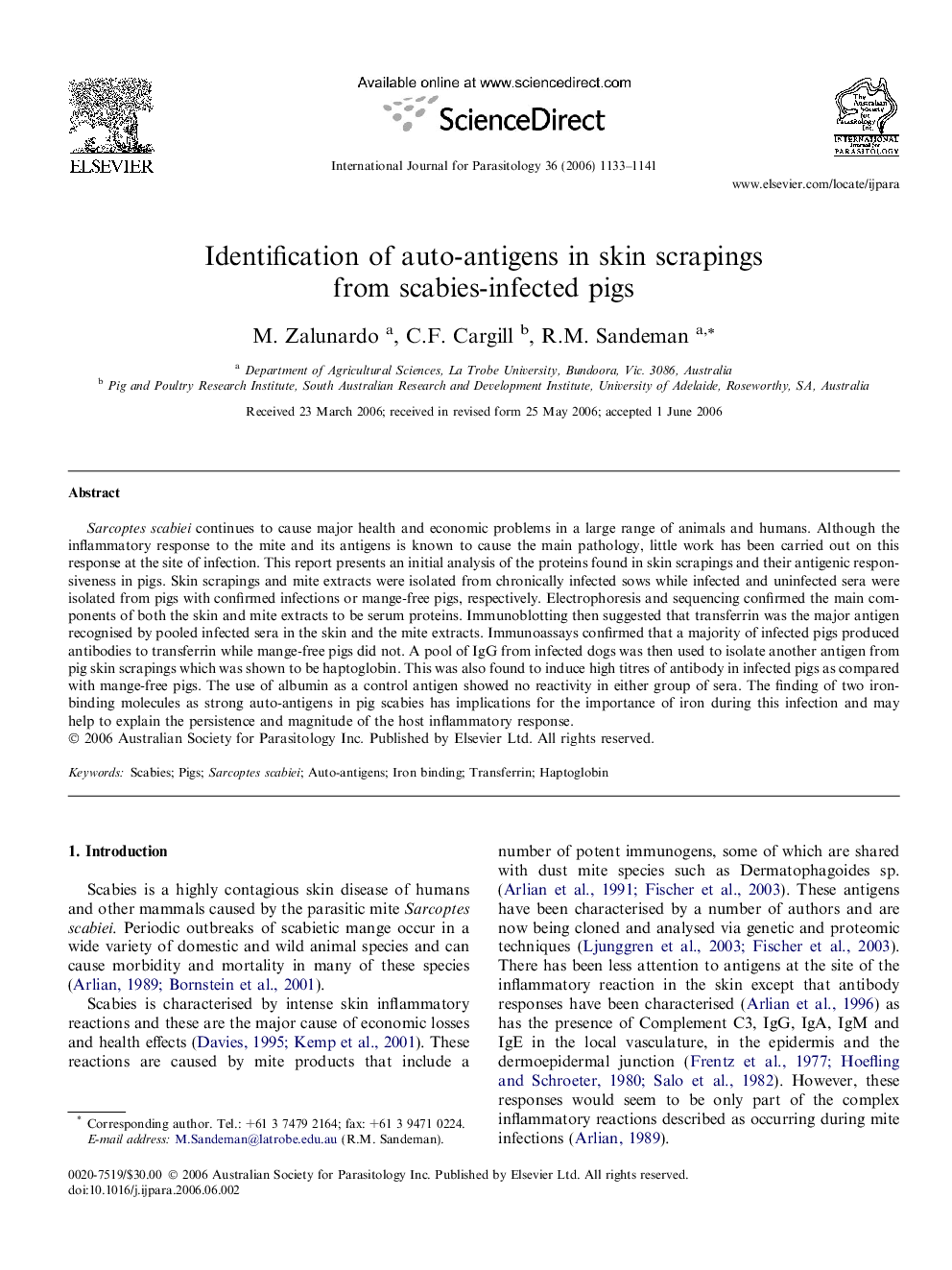| Article ID | Journal | Published Year | Pages | File Type |
|---|---|---|---|---|
| 2436547 | International Journal for Parasitology | 2006 | 9 Pages |
Sarcoptes scabiei continues to cause major health and economic problems in a large range of animals and humans. Although the inflammatory response to the mite and its antigens is known to cause the main pathology, little work has been carried out on this response at the site of infection. This report presents an initial analysis of the proteins found in skin scrapings and their antigenic responsiveness in pigs. Skin scrapings and mite extracts were isolated from chronically infected sows while infected and uninfected sera were isolated from pigs with confirmed infections or mange-free pigs, respectively. Electrophoresis and sequencing confirmed the main components of both the skin and mite extracts to be serum proteins. Immunoblotting then suggested that transferrin was the major antigen recognised by pooled infected sera in the skin and the mite extracts. Immunoassays confirmed that a majority of infected pigs produced antibodies to transferrin while mange-free pigs did not. A pool of IgG from infected dogs was then used to isolate another antigen from pig skin scrapings which was shown to be haptoglobin. This was also found to induce high titres of antibody in infected pigs as compared with mange-free pigs. The use of albumin as a control antigen showed no reactivity in either group of sera. The finding of two iron-binding molecules as strong auto-antigens in pig scabies has implications for the importance of iron during this infection and may help to explain the persistence and magnitude of the host inflammatory response.
